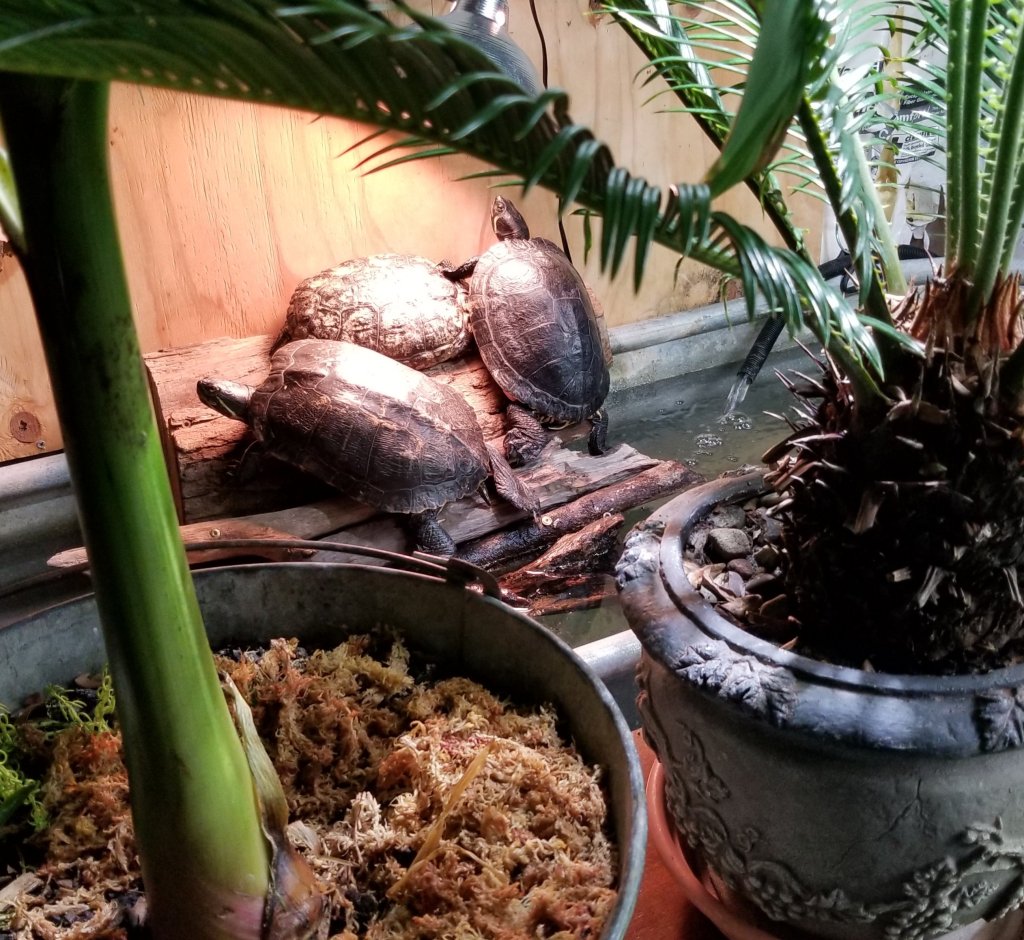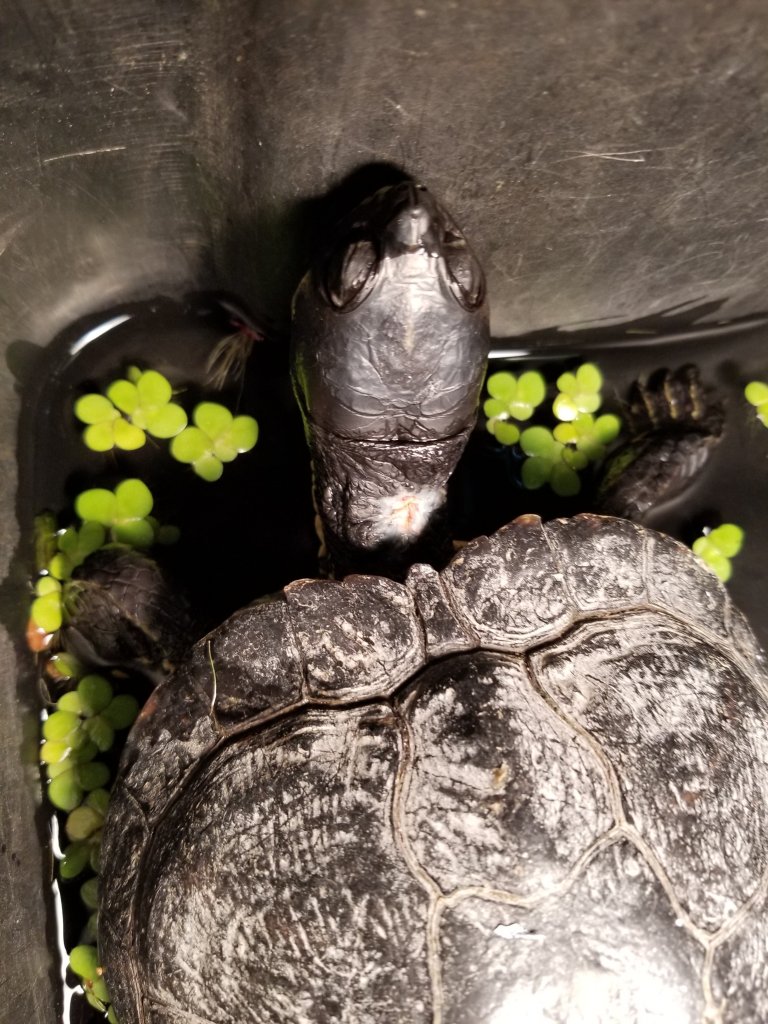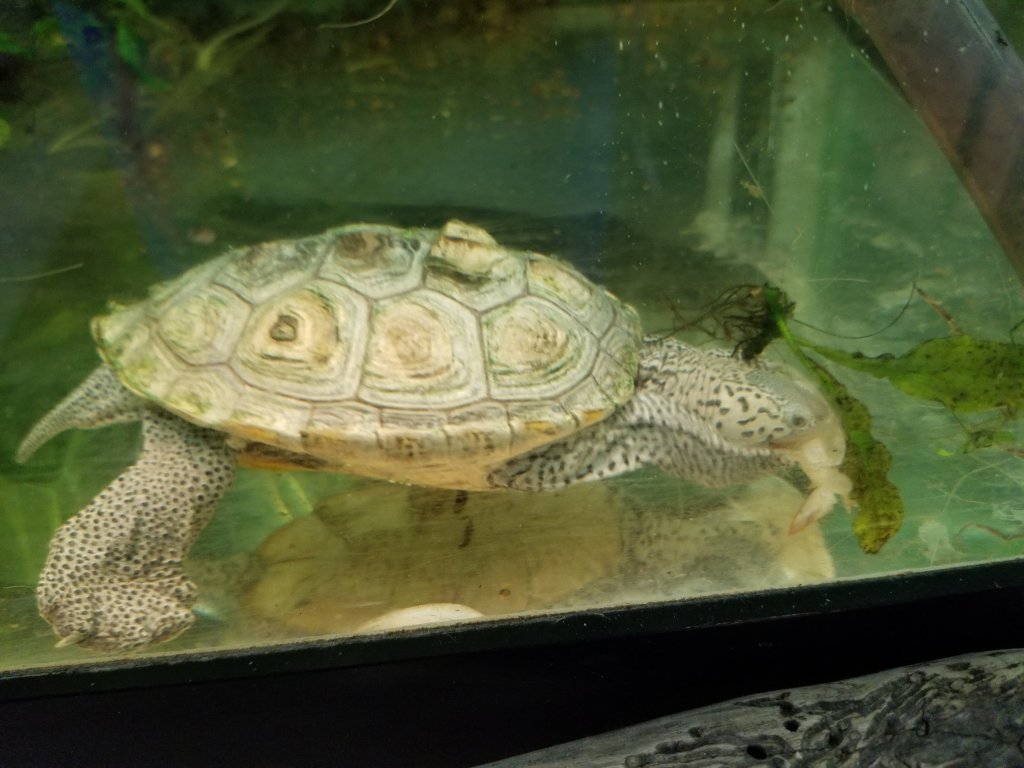For many years, my turtles lived together peacefully. I would read about aggressive behavior and wonder what all the fuss was about. My turtles never hurt each other…

…until about 2 years ago. The first signs of it was in my outdoor pond. A big female Redear Slider began staying out of the water. All the time. Even on very hot, dry days. This wasn’t a turtle looking to lay eggs. I realized she was being harassed by the male Redear.

When I moved the turtles indoors for the winter, I kept the male separate, in his own 50 gallon tank.
Then, I acquired another male turtle. This one is a Cumberland Slider/ Yellow-Bellied Slider mix. He was vicious from day one! So he went into his own tank.

I had three female Sliders in a 100 gallon “horse trough”. I added a female Yellow-Bellied Slider. She is nasty! She attacked the biggest female Redear. I removed the big female Redear to her own 55 gallon tank.
Also, a smaller female Redear began behaving aggressively, biting at the others. I quickly made decisions, moving turtles around until relative peace was attained. My biggest “Slider”, is a Northern Red-Bellied Cooter. Nobody messes with her.

There are two physical signs of turtle aggression. One is their tails get bitten. You may see the tip of the tail is suddenly shorter. The other tell-tale sign is injuries around the neck. For some reason, they bite at their victims neck. One well-placed bite could kill. If you see whitish scrapes around the neck and head of your turtle, get it away from the situation. Put it alone where it can recuperate.









